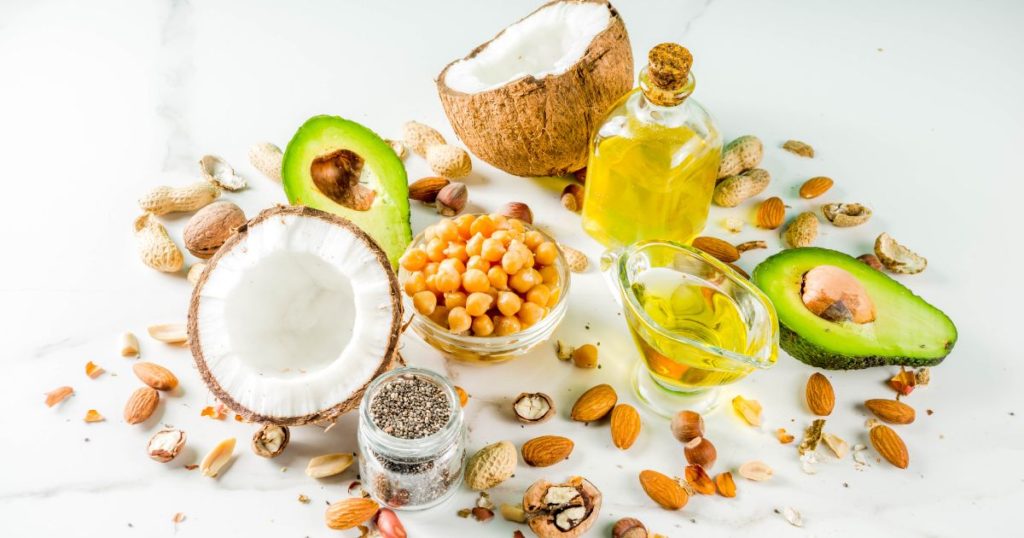Fat is one of the most misunderstood nutrients. Fat is one of three nutrients that supply calories to the body. The other two are protein and carbohydrates. Fats belong to a group of substances called lipids and come in liquid or solid form. All fats are combinations of saturated and unsaturated fatty acids. Fats (namely omega-3 and omega-6) provide essential fatty acids, which are not made by the body and must be obtained from food.
The unsaturated fats are the raw plant, nut and seed oils. They are fresh pressed and liquid at room temperature. There are two types of “good” unsaturated fats:
- Monounsaturated fats are found in high concentrations in Olive, peanut, and canola oils, avocados, nuts such as almonds, hazelnuts, and pecans, seeds such as pumpkin and sesame seeds.
- Polyunsaturated fats are found in high concentrations in sunflower, corn, soybean, and flaxseed oils, walnuts, flax seeds, and fish. Fish produce EPA and DHA from ALA found in the algae and plankton they eat.
Omega-3 fats are an important type of polyunsaturated fat. The parent fatty acid of the omega-3 series is alpha-linolenic acid (ALA). The long-chain omega-3 fatty acids, eicosapentaenoic acid (EPA) and docosahexaenoic acid (DHA), can be synthesized from ALA. However, two essential fatty acids, linoleic and alpha-linolenic, cannot be synthesized in the body and must be obtained from food. One way to get omega-3 fats is by eating fish that thrive in cold environments (not farmed fish)2-3 times a week. Good plant sources of omega-3 fats include flax seeds, chia, walnuts, hempseed oil, canola or soybean oil.
Omega-6 fatty acids are also an essential fatty acid and come from vegetable oils, (palm, soybean, rapeseed, borage, and sunflower) and poultry, eggs, nuts, sesame seeds, pumpkin seeds, breads, and cereals. Linoleic acid (LA) is an omega-6, not to be confused with alpha-linolenic acid (ALA), which is an omega-3 fatty acid. Linoleic acid is converted to gamma-linolenic acid (GLA) in the body.
Omega−9 fatty acids are an oleic acid which is the main component of olive oil, macadamia oil and other monounsaturated fats and erucic acid which is found in rapeseed, wallflower seed, and mustard seed. Unlike omega-3 and omega-6 fatty acids, omega−9 fatty acids are not classed as essential fatty acids (EFA).
Most people don’t eat enough healthful unsaturated fats. The American Heart Association suggests that 8-10 percent of daily calories should come from polyunsaturated fats.
The other fats are the Saturated Fats. They are the animal fats and solid at room temperature. Saturated fat is also in tropical oils, such as coconut oil, palm oil, and cocoa butter. Foods made with butter, margarine, or shortening have a lot of saturated fat. Saturated fat can raise your cholesterol.
Trans fat is a fat that has been changed by a process called hydrogenation. This process increases the shelf life of fat and makes the fat harder at room temperature. Harder fat makes crispier crackers and flakier pie crusts. Trans fat can also raise your cholesterol. Basically, you will find this kind of fat in most processed foods.
So in this very basic understanding of fats, we see that it is important to ingest the good essential fats and decrease the trans fats or avoid them all together.
Contact me to get get a personalized health evaluation.
To your good health.
Charlene



